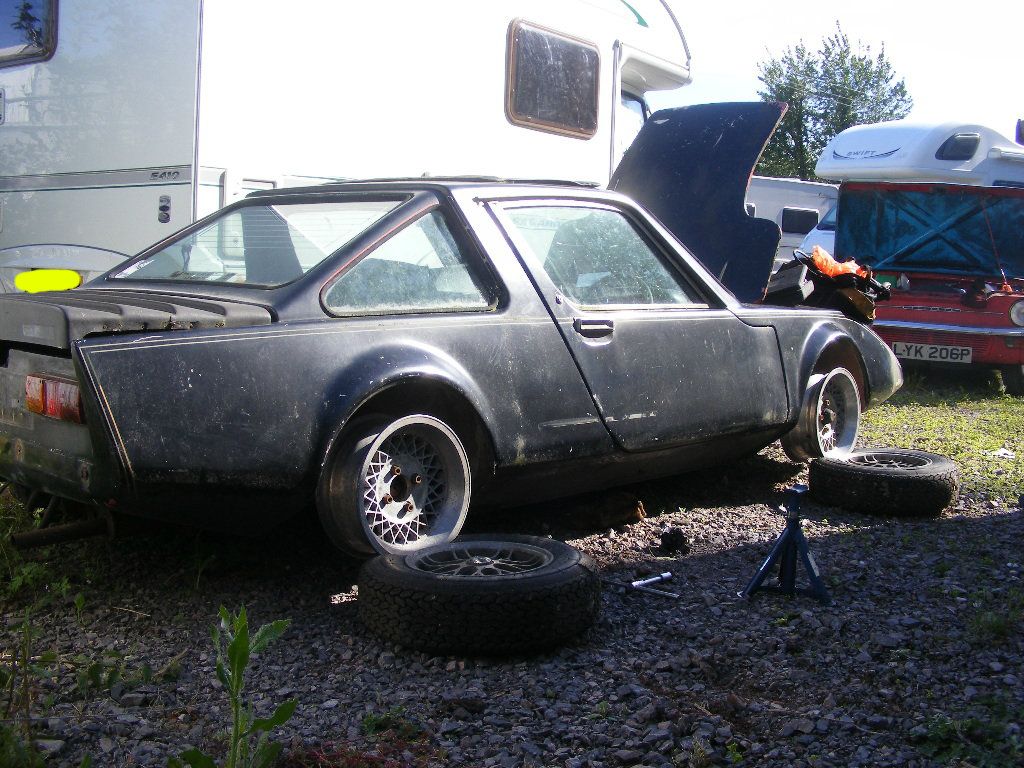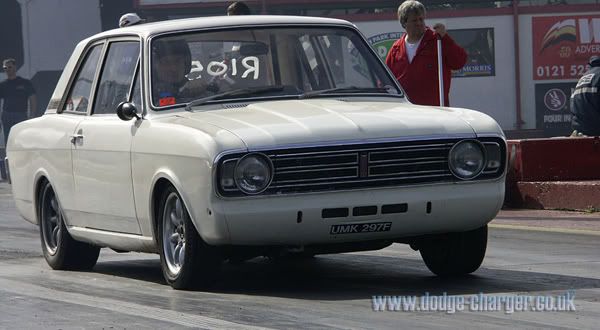|
|
|
Jun 10, 2012 21:00:22 GMT
|
|
Ok this is a basic one but I'm going through drill bits like its going out of fashion.
I'm drilling mild steel of varying thickness using a pillar drill and they seem to blunt after only a few holes.
Ive tried cobalt drill bits and they do last a bit longer but still blunt very easy. I use a thin oil to lube whilst drilling.
So should it be fast and lots of lube? slow no lube? slow with lube? how much effort should i put in?
^that last 2 lines may sound a little dodgy ;-)
Any advice welcome
|
| |
I'm just an average man with exceptional hair.
|
|
|
|
|
|
|
Jun 10, 2012 21:28:32 GMT
|
|
depends on your drill size, slow is better, for say a 10mm drill about 500rpm and smaller bits need faster speeds,
any metal cutting tool will eventually blunt, a bit of cutting oil will help but drills prefer low speed high downward pressure over high speed low pressure, this causes heat and blunts them quite quicky.
you can re-grind drills free-hand and once you've done a few dozen you'll be quite good at it, also cheap drills often aren't that great in terms of material spec., better to buy quality ones (even old blunt ones at a car-boot)
when grinding have a cup of water handy and keep dipping the the drill to take the heat out, if you get them blue you can loose the tempering.
|
| |
|
|
|
|
|
Jun 10, 2012 22:08:27 GMT
|
|
^ Good advice. My pillar drill pretty much stays in the lowest possible speed 90% of the time, as most of the holes are ~8mm and up.
One technique I've started experimenting with is 'peck' drilling. I found that even at a slow speed, drills can get quite hot quite quickly if you're putting enough pressure on for them to cut cleanly. Rather than lessening the pressure - which can cause the drill to rub on the workpeice without cutting it, eventually work-hardening the metal (esp. if it's stainless) - I briefly apply a high enough pressure before lifting the drill from the workpeice again. Repeating this keeps the drill working but without overheating. You do need to make sure that the drill does some cutting at the base of the hole. It looks a bit like a bird pecking at something - hence 'peck' drilling - and is widely used in CNC machining where there's no-one to keep an eye on the swarf.
Technically, it should only be required when drilling something that doesn't produce nice clean sprials of swarf (some steels, aluminiums, etc.) but where you're drilling by hand with not-quite-right drill bits - esp hand-sharpened ones - without a coolant spray (perhaps in a drill press that won't go slowly enough), I find it useful.
A video of CNC pack drilling, just to give you an idea.
I do something similar by hand.
To determine the correct pressure is a question of experimentation. Start applying a lot, with a sharp drill, and you should get long, curly swarf. If you reduce the pressure until the drill stops 'biting' and starts just rubbing over the surface, you've gone too far and need to apply more pressure.
Finally, proper cutting fluid does make a difference - not that cheap though.
|
| |
Last Edit: Jun 10, 2012 22:09:51 GMT by jrevillug
|
|
v8ian
Posted a lot
  
Posts: 3,832
|
|
|
|
|
2 things to remember, small drill high speed, big drill low speed, and don't load the drill, let the drill do the work, they should cut without effort, if you are loading them heavily, either they are rubbish drills, or they are blunt
|
| |
Atmo V8 Power . No slicks , No gas + No bits missing . Doing it in style.
Austin A35van, very different------- but still doing it in style, going to be a funmoble
|
|
drprop
Part of things
 
Posts: 16
|
|
|
|
Another thing to remember. Big drills don't like cutting through solid material. Best to start with a pilot hole, about 3mm and then work up in reasonable jumps, say to 6mm before finishing with a 10mm.  |
| |
|
|
jasonj
Part of things
 
Posts: 220
|
|
|
|
|
I agree with the pilot drill suggestion... to work out what size pilot hole look at the end of the larger drill bit. The flat section on the very tip is called the 'land' the pilot drill should be the same size as the width of the land. Hope that makes sense.
|
| |
Team Supercharged Opel Ascona 400.
294bhp - 235 lb/ft
|
|
MrSpeedy
East Midlands
www.vintagediesels.co.uk
Posts: 4,791 
|
|
Jun 11, 2012 16:33:32 GMT
|
|
Anything over 1/4" I always pilot drill first. Larger drills need slower speeds, it's all about surface speed of the work piece/tool cutting edge. I could tell you all the recommended speeds/feeds quoted from Dormer, but that would be a little dull!
As a rough guide, up to 1/4" dia 1000rpm approx. 3/8" 750rpm, 1/2" 500rpm. all speeds are approx and if you're getting 'chatter', ie; vibration from the drill bit, then slow down more.
If any lube is used, you'd be better using a cutting agent, such as those used for thread tapping. Ordinary oil, whilst reducing friction on the sides of the flutes, can also have the same effect on the cutting edge, which is obviously not desirable. You want the drill to cut, not slide over the surface.
|
| |
|
|
Raoul Duke
Part of things
 
Posts: 990
Club RR Member Number: 117
|
Drilling...help!Raoul Duke
@raoulduke
Club Retro Rides Member 117
|
Jun 11, 2012 20:00:44 GMT
|
|
As said, invest in a grinding wheel and learn to re-sharpen the drill bits. The angles are fairly* straight-forward, and after some practice it'll be a doddle.
|
| |
...a redder shade of neck on a whiter shade of trash...
|
|
|
|
|
Jun 11, 2012 20:43:06 GMT
|
|
I really need to learn how to sharpen drills. Can anyone point me to a idiot's guide to doing it please?
In that peck drilling video above, is he not drilling with a straight fluted endmill and hence lifting the chips out manually?
Also, I read somewhere that masonry bits are actually good for boring harder steels but they need to have an edge ground on them first and that ordinary silicon carbide wheels are no good for them. Could anyone here shed any light on that? (And can they be sharpened with an aluminium oxide flap wheel?)
|
| |
|
|
|
|
|
Jun 11, 2012 20:57:32 GMT
|
|
As I said, peck drilling is correctly used to remove chips better, but can be used to keep the drills cool by reducing the 'duty cycle'. There are other videos that show peck drilling with normal drills, but this one gives the best impression of the 'dwell' time required at the bottom of the stroke.
|
| |
|
|
|
|
|
Jun 11, 2012 21:00:28 GMT
|
|
Thanks for all the input. Will try slower speeds I think as I haven't really adjusted that. Also gonna give a go at sharpening drill bits....got loads to practice on ;-)
|
| |
I'm just an average man with exceptional hair.
|
|














